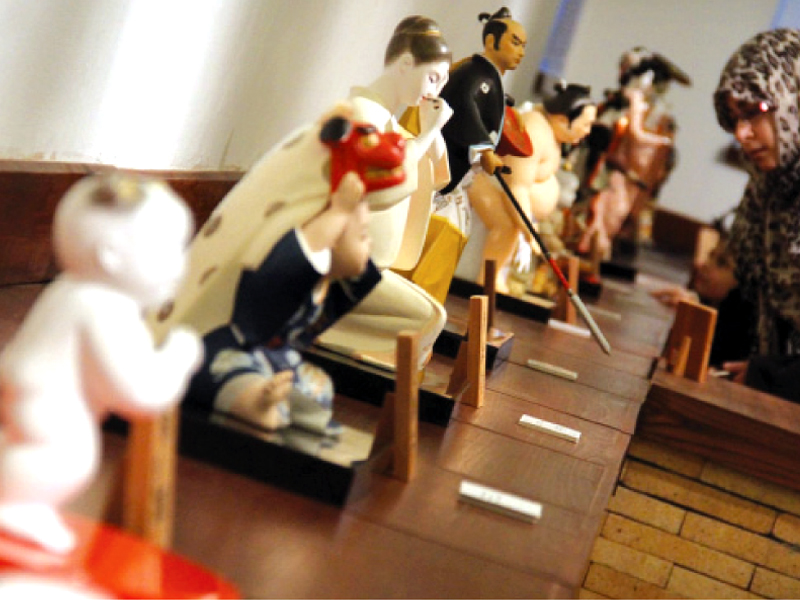
Titled “The dolls of Japan: Shapes of Prayer, Embodiment of Love”, the exhibition displays more than 70 dolls that have been sent in by the Japan Foundation.
Garbed in a plethora of costumes and adorned with elaborate hairstyles and makeup, the dolls make for an enchanting collection to look at and admire for their finesse, detailing and workmanship.
Japanese Ambassador Hiroshi Inomata, who inaugurated the exhibition, said dolls have been an integral part of the Japanese culture for centuries. He added that they reflect the history of Japan from pre-historic to modern times. Some dolls were thought to have religious meaning or mystical powers while others were appreciated for their beauty, he informed.

The purpose of showcasing the exhibition, he further said, was to give visitors a glimpse of versatility and individuality of traditional and cultural life of Japan through their artistic handmade objects.
“As no matter how much progress we make in the world through our machinery and robots, we the Japanese, still keep in touch with our traditions and values. For instance, these handcrafted dolls are still significant for us today as they were for our ancestors,” he said.
Uxi Mufti, the executive director of Lok Virsa National Institute of Folk and Traditional Heritage, commended the effort to showcase the ancient Japanese art form at the gallery.
He said although he did not know much about dolls, he knew a great deal about Japanese arts as he had been a frequent visitor to Japan.
“Japan is a very great nation for art traditions. It is unfortunate that, in Pakistan, we only know Japan as a nation that makes cars and electronic items but we have neglected as a nation, to see the other side of Japan, which is the artistic side,” he said.
Japanese are great nature lovers and artists, and this is one of the few nations that values art and culture above anything else where artists are often titled living treasures, he added.
“Dolls are much more than playthings,” he said, adding that some dolls in Japan had religious connotations and were placed in temples. The earliest dolls were made from straw and thrown into the river at shrines as an offering. In the course of time, by 1930, doll-making became a highly professional folk art, he added.
Speaking about the extinct art of doll-making in Pakistan, he said grandmothers made paper dolls and cloth dolls and girls played with dolls and doll houses. “Our children have stopped playing with dolls now and are importing them which is unfortunate because we have lost the tradition of making our own dolls. So this is an opportunity to take inspiration from the Japanese to preserve our art and culture,” he said.
Families and individuals crowded the gallery to have a look at the dolls and some huddled close to take photographs with them.
Eight-year-old Hassan, who was accompanied by his family at the exhibition, said he enjoyed being at the display. When asked if he was fond of playing with dolls, he was quick to reply, “No. These are for decoration!” The exhibition will continue at the gallery till January 30.
Published in The Express Tribune, January 8th, 2015.

















COMMENTS
Comments are moderated and generally will be posted if they are on-topic and not abusive.
For more information, please see our Comments FAQ